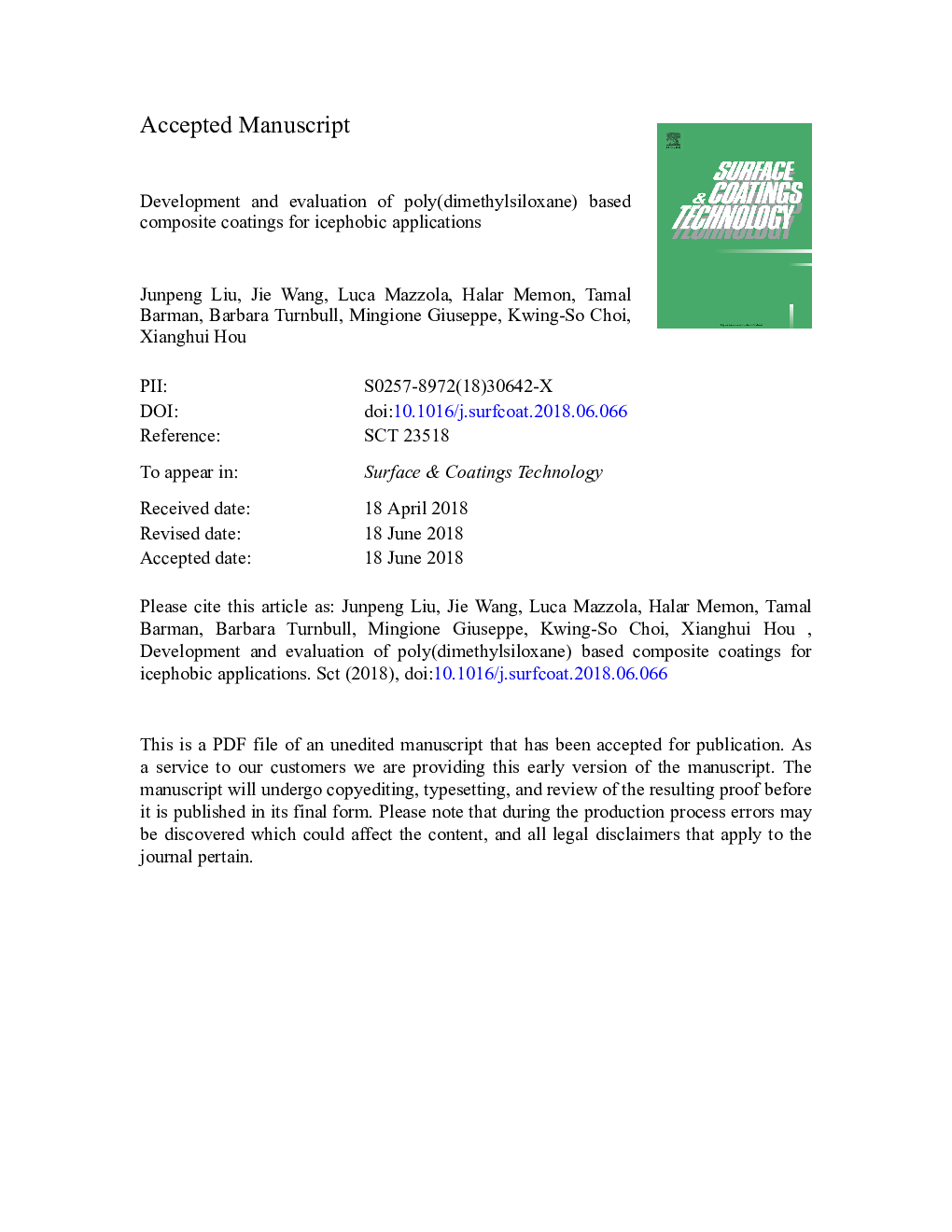| Article ID | Journal | Published Year | Pages | File Type |
|---|---|---|---|---|
| 8023356 | Surface and Coatings Technology | 2018 | 20 Pages |
Abstract
Formation and accretion of ice on the leading edge surface of aircrafts wings may lead to disasters. The current de-icing system for aircraft will build up weight, increase energy consumption and add complexity to the aircraft systems. Development of icephobic coatings is a potential solution to prevent ice formation and/or reduce accretion on the critical surface of aircraft. Icephobic coatings based on poly(dimethylsiloxane) (PDMS) with modification by fluorosilane and incorporation of silica nanoparticles have been fabricated. The hydrophobicity of the coatings has been measured in normal conditions with atmospheric pressure and room temperature, showing improvement of hydrophobicity by the fluorination of PDMS and incorporation of silica nanoparticles. The water droplet icing behaviour shows better anti-icing performance for fluorinated PDMS (F-PDMS)/silica coatings with a rough surface. The ice adhesion strength test results show that F-PDMS coatings without silica nanoparticles have lower ice adhesion strength implying better de-icing performance. The wettability of the coatings was also measured at reduced pressure and temperature, to study the mechanism of higher ice adhesion strength of F-PDMS/silica coatings comparing with F-PDMS based coatings. For the design and fabrication of icephobic coatings, compromise on the roughness induced hydrophobicity may become a critical requirement to avoid mechanical interlock between the ice and the rough surface.
Related Topics
Physical Sciences and Engineering
Materials Science
Nanotechnology
Authors
Junpeng Liu, Jie Wang, Luca Mazzola, Halar Memon, Tamal Barman, Barbara Turnbull, Giuseppe Mingione, Kwing-So Choi, Xianghui Hou,
